RIYADH: Artificial intelligence is reshaping creative industries in Saudi Arabia where artists are blending tradition and technology, integrating personal archives and cultural memories into a dynamic, human-machine collaboration.
One standout example is Daniah Al-Saleh, whose work was featured at Noor Riyadh 2022, the world’s largest annual light art festival.
Known for merging AI with cultural memory, Al-Saleh exemplifies the fusion of innovation and heritage. Her artistic journey began with geometric watercolors, but pursuing a master’s degree in computational art deepened her engagement with programming.

This evolution culminated in her 2019 installation, “Sawtam,” which won the Ithra Art Prize and marked a pivotal moment in her career.
“I broke down the spoken word into the tiniest form of communication, which was the phoneme,” Al-Saleh told Arab News.
“I brought in my knowledge of coding and programming, inspired by (Manfred) Mohr, this computer artist… and recorded my voice saying these abstract sounds.”
The result was a soundscape where Arabic phonemes merged into a wall of noise that, when deconstructed, revealed the fundamental elements of the region’s spoken language.
“It was a big turning point in my art career,” she said.
While studying at Goldsmiths, University of London, Al-Saleh was introduced to machine learning and used pattern recognition program StyleGAN to create several notable works.
One such piece, “Love Stories,” features multiple figures lip-syncing to 26 well-known Arabic love songs. The work examines cultural resistance to public displays of love and affection in conservative societies.
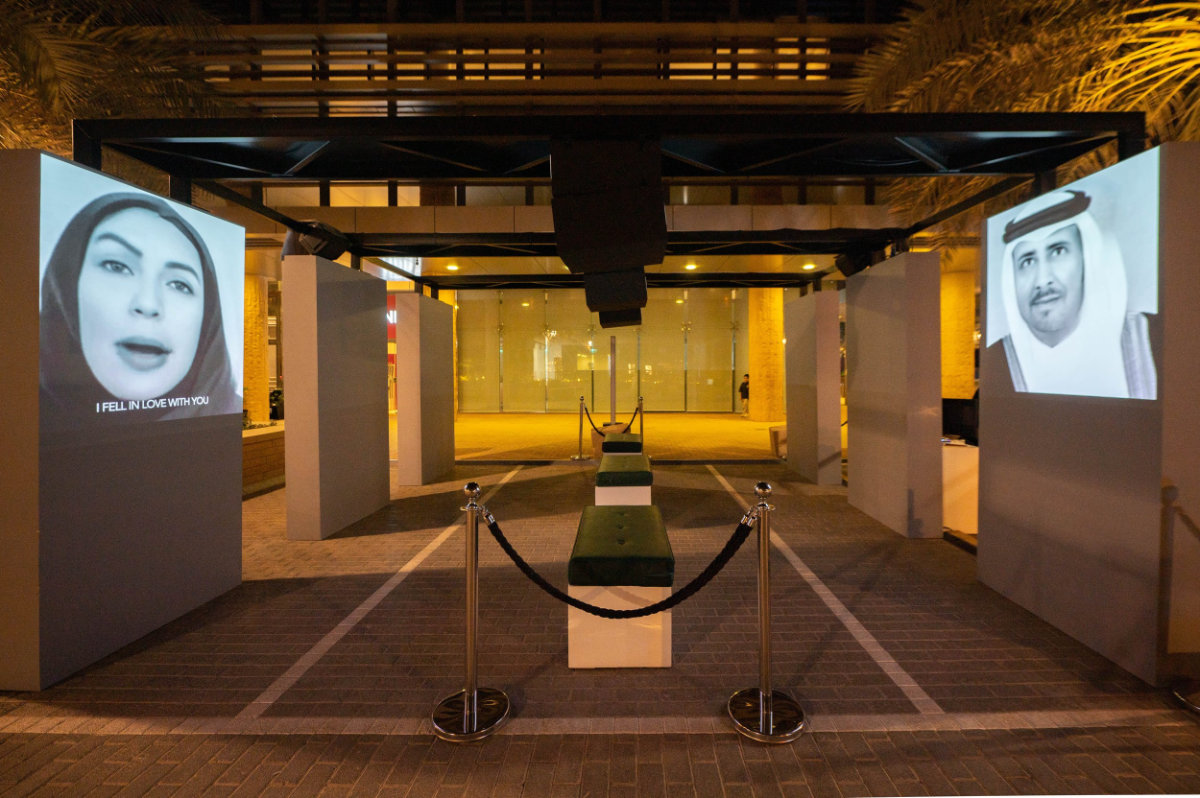
Saudi artist Daniah AlSaleh's “Love Stories,” composed of multiple figures that lip sync to 26 well-known Arabic love songs that examines the traditional resistance to public displays of love and affection in conservative societies. (Supplied)
Another, “Evanesce,” blurs the line between memory and reality, evoking nostalgia for Egyptian cinema’s golden era through AI-generated videos.
Meanwhile, “Rewind Play Glitch” presents a curated mosaic of seemingly personal imagery, exploring themes of familial bonds, love and the passage of time.
Despite her use of machine learning, Al-Saleh does not rely solely on AI. She blends digital techniques with traditional media to create a distinctive style.
This fusion is evident in her 2022 piece, “Hinat,” which combines photographic transfer, painting, video and algorithmic generation to honor a female Nabatean historical figure.
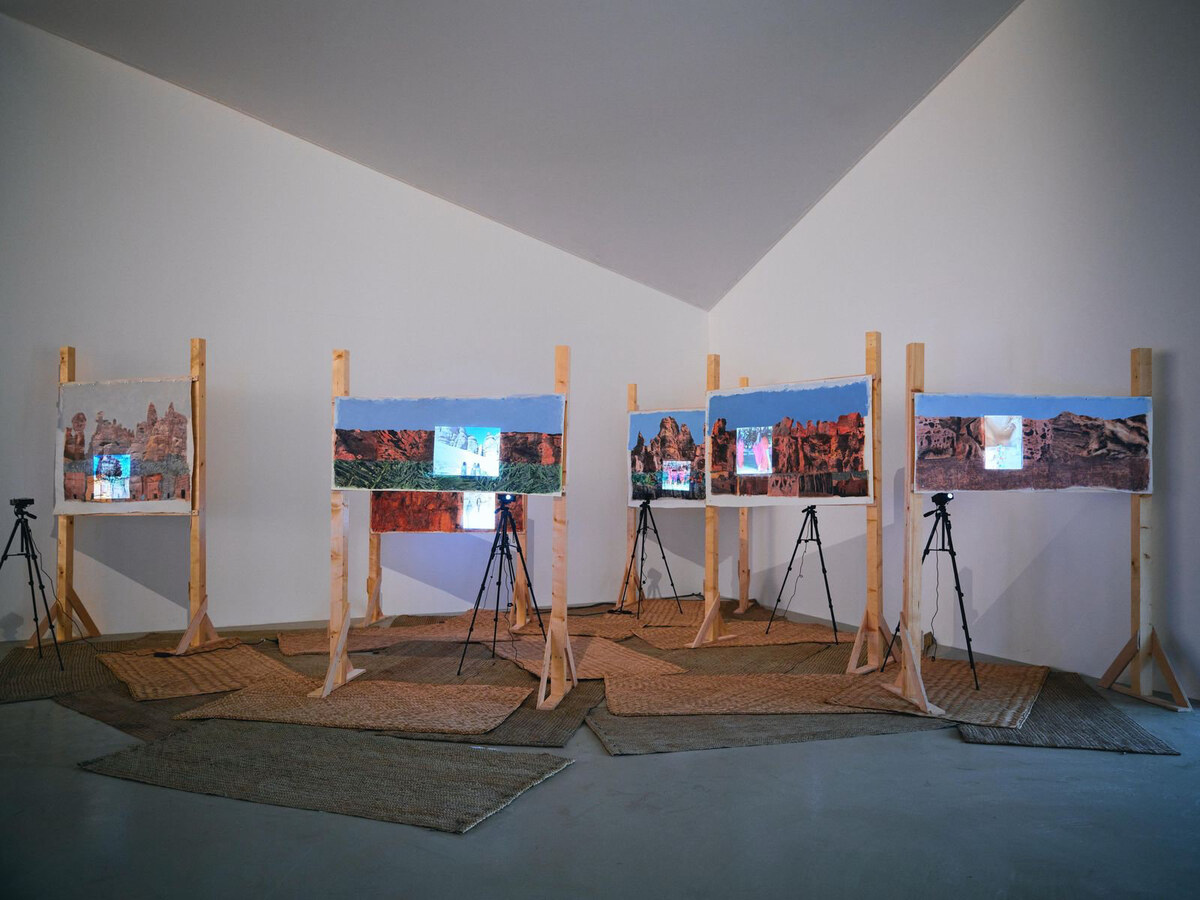
Saudi artist Daniah AlSaleh's “Hinat” utilizes photographic transfer, painting, video, and algorithmic generation to immortalize a female Nabataean historical figure. (Supplied)
The installation, currently featured in the “Art of the Kingdom” exhibition at the Saudi Arabian Museum of Contemporary Art, highlights her ability to bridge ancient narratives with modern technology.
To create the piece, Al-Saleh hired several women and filmed across various locations in Saudi Arabia’s historic AlUla region, home to some of the Kingdom’s most striking Nabatean ruins.
Like any technology, AI tools inevitably become outdated. Al-Saleh initially used StyleGAN for some of her work, but the program is no longer available.
“As an artist, I need to adapt and see within what context can I use that, is it a good fit, or should I use something else? Or maybe not use AI at all?” she said.
DID YOU KNOW?
• AI is not limited to visual art — it is also used to compose music, write poetry and even design sculptures.
• AI art generators such as DALL-E 2 and MidJourney use advanced algorithms to create unique visual masterpieces.
• AI integration with virtual reality offers immersive, interactive experiences in AI-generated environments.
Artists incorporating AI into their creative practices benefit from the support of curators who bridge the gap between art and technology.
Qatar-based curatorial duo Auronda Scalera and Alfredo Cramerotti have worked with numerous artists to integrate emerging technologies into contemporary art.
Most recently, they curated the 2024 Noor Riyadh Festival which highlighted innovative light-based artworks. For Noor Riyadh 2024, Cramerotti was the lead curator for international art, and Auronda Scalera curatorial advisor; the other lead curator was Dr. Effat Fadag for Saudi art.
Scalera explained that some artists she and Cramerotti work with “create their own AI with their archive — for example, they don’t use ChatGPT.”
“When you create your tool, it’s like you create your brush,” she told Arab News.
Al-Saleh is one such artist who prefers to use her own archive. “I don’t use ready-made data sets — I collect what I can from open-source content,” she said.
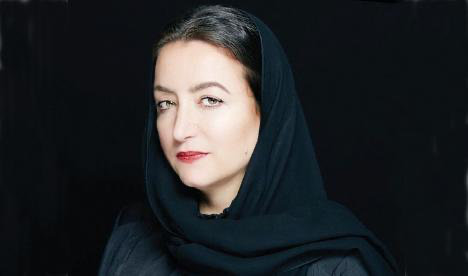
London-based Saudi Arabian artist Daniah Alsaleh winner of the second edition of the Ithra Art Prize. (Supplied)
“For example, for my work Evanesce, there are a lot of available movies online in black and white, which I watched — tens and tens of these movies — and collected the data I wanted and then worked with that.”
She added: “Regarding ‘Love Stories,’ that was a bit challenging because I had to collect data sets of males and females with Gulf and Arab features that were public. I can’t go into private profiles and take those photos.
“(It depends on) the type of AI you’re using, on how much control you want to get involved with, or do you want to give agency to the machine learning or AI program, or how much agency you want to take.”
In addition to their work at Noor Riyadh, Scalera and Cramerotti were curators and jury members for the 13th anniversary of the Lumen Prize X Sotheby’s in 2024, which featured cutting-edge digital artworks from leading artists.

Curatorial duo Auronda Scalera and Dr. Alfredo Cramerotti, who specialize in bridging between art and new technologies. (Supplied)
They also curated Art Dubai Digital 2024, a section dedicated to exploring the intersection of digital art and technology.
The duo leads Multiplicity-Art in Digital, an online platform promoting art with a focus on diversity and inclusion, and spearheads Web to Verse, a project dedicated to researching the evolution of digital art from the 1950s to today.
Cramerotti said artists tend to approach technology differently from designers, focusing not on function but on critically unpacking, subverting and reimagining its use in creative contexts.
“Unlike designers, let’s say, that use the technology for a certain purpose, artists don’t have a purpose in terms of a function,” he told Arab News.
“They’re really good at unpacking the technology, critically analyzing the technology, subverting the use of technology, using that technology for another purpose.”
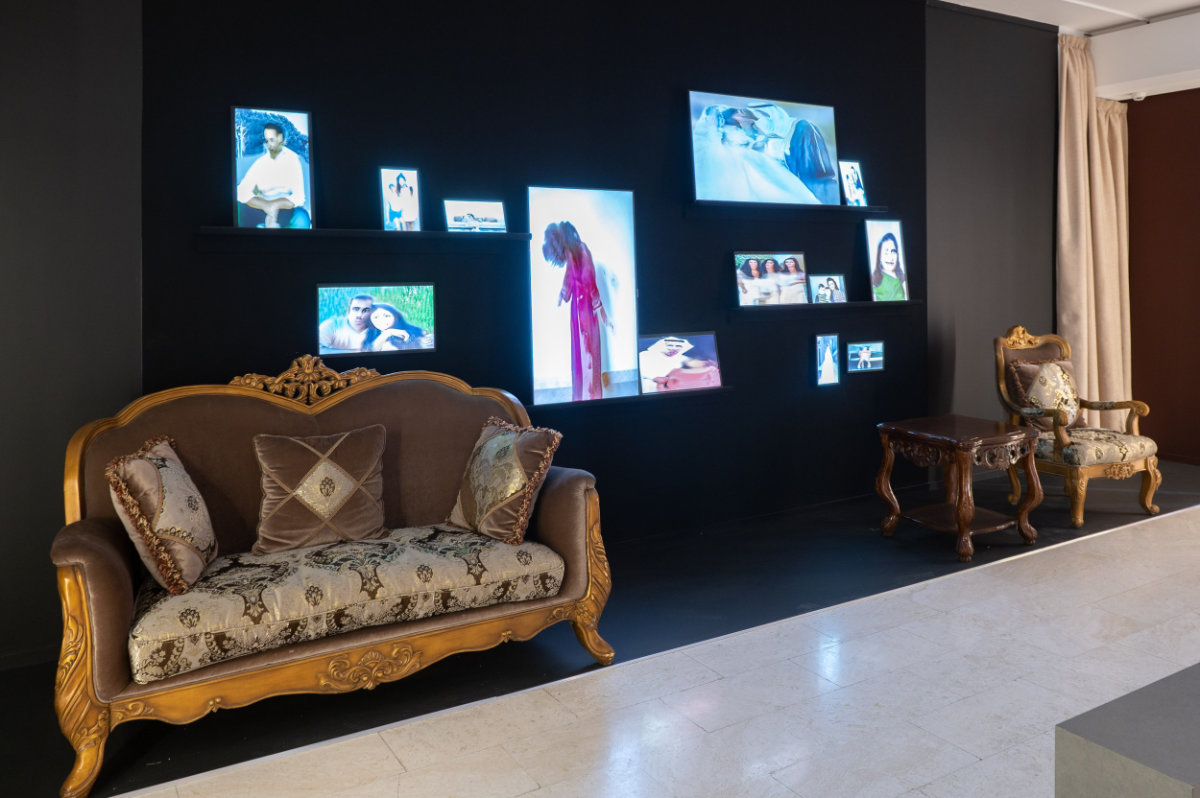
Saudi artist Daniah AlSaleh's “Rewind Play Glitch," which is a curated mosaic of seemingly personal imagery evoking familial bonds and love. (Supplied)
Each moment in history brings new technologies to explore, as with photography in the 19th century and computer art in recent decades. The art lies in the ideas and techniques behind using these tools, not the tools themselves.
“It’s not just about using ChatGPT to come up with a text or using Sora to come up with an image,” Cramerotti said.
“It’s about asking, ‘Okay, what are the critical elements that I input to create that text or the image? How do I link and contextualize my approach as an artist beside my work as an artist in using this technology?’”
As AI evolves daily, it challenges the world — and artists — to harness its advancing tools in new ways.
“Even (for) us as curators, it’s a learning process,” Scalera said. “Curators today, we are like students.”
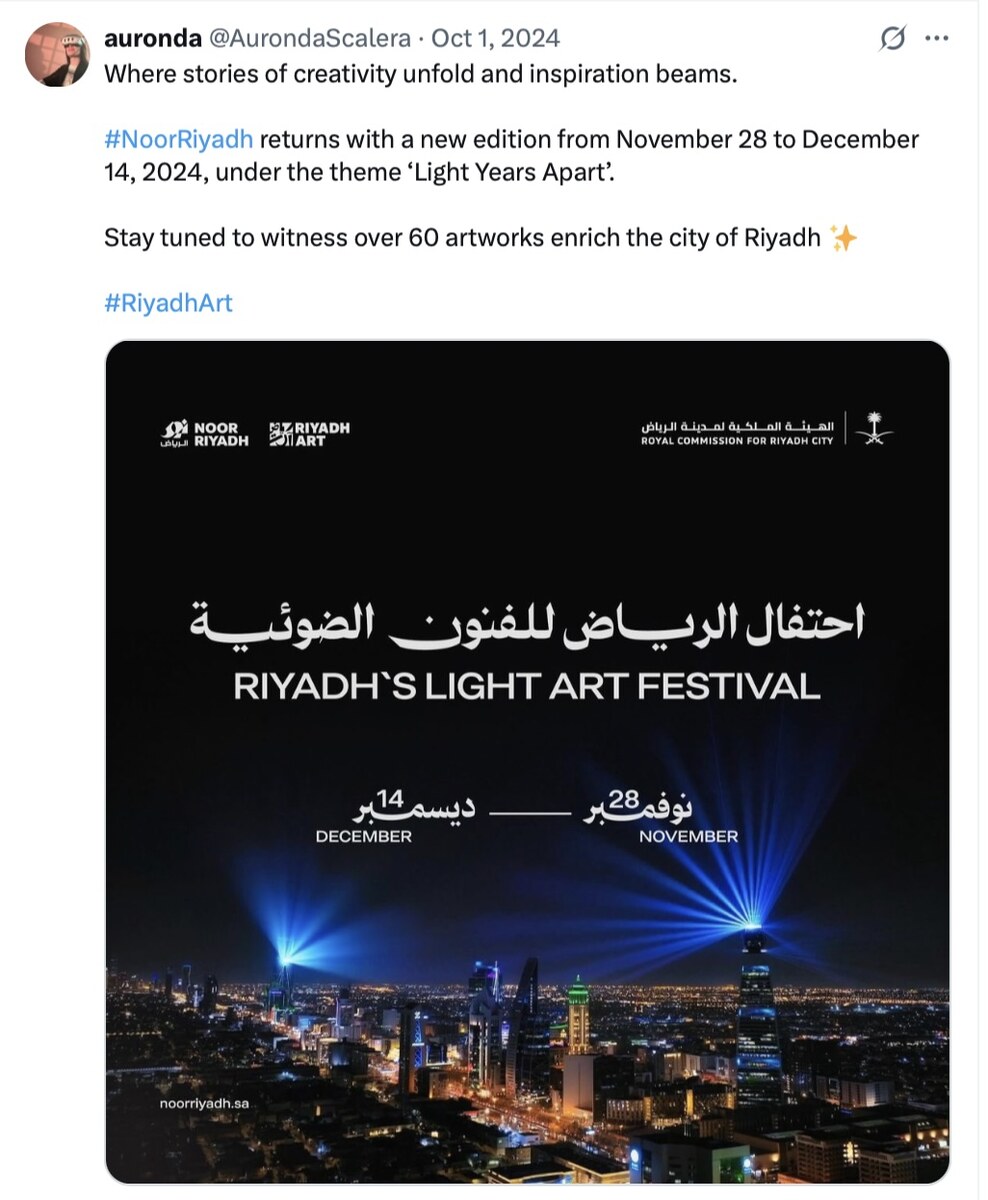
Curator Auronda Scalera's post on X on Oct. 1, 2024. (X: @AurondaScalera)
Expanding on this, Cramerotti added: “We are the interface between (art and) the public — and as art practice, art making, art displaying is changing, then our work is changing.
“You always have to frame a certain artistic practice in a new way and to present to a public using a new vocabulary.”
Another challenge lies in bridging contemporary and digital art spheres through curatorial innovation.
“With the 2021 digital art boom, you have a lot of digital curators who have no idea how a museum works, or how an institution works, or how to write an exhibition mediation plan or an exhibition installation plan,” Cramerotti said.
“And then, you have a lot of museum curators who have no idea how an NFT works, or how an immersive experience impacts the senses of a viewer.”
He emphasized that emerging technologies introduce scientific complexities beyond the traditional scope of art history, requiring curators to adapt and expand their expertise.
Scalera explained that this was why they decided to form a curatorial duo.
“This curiosity about the unknown is something that is really important for curators, because otherwise you are going to be stuck in only one theory,” she said.
“In that way, you can be curious, and you can work closely with the artist and discover different landscapes in art and new technology.”
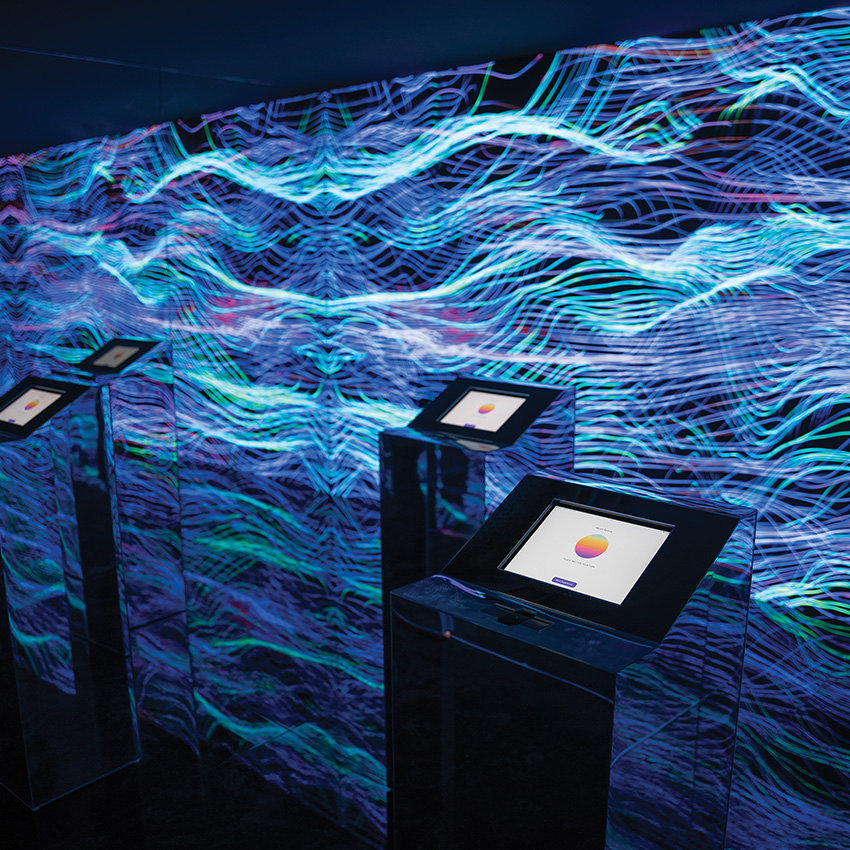
Krista Kim’s “Heart Space,” that transforms collected heartbeats into visual symphonies, at display during Noor Riyadh 2024. (Supplied)
The latest Noor Riyadh edition explored the theme “Light Years Apart.”
The festival highlighted numerous AI-generative artworks, such as Krista Kim’s “Heart Space,” which transformed collected heartbeats into visual symphonies, and Random International’s “Alone Together,” which used a custom tracking system to spotlight selected passersby.
While AI-generated images are now accessible to the masses, ethical concerns remain regarding the references fed into these systems.
Last month, more than 5,600 artists signed an open letter urging Christie’s New York to cancel its first AI-generated art auction, criticizing AI models for allegedly using copyrighted works without permission.
Scalera noted ongoing efforts to address these ethical challenges.
“It’s an open discourse now,” she said.

































